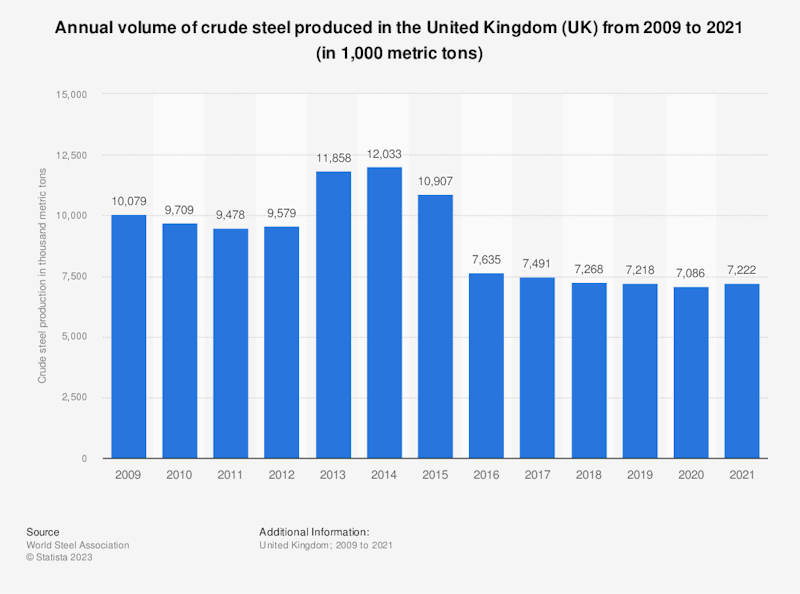Topic Videos
Government Intervention - Evaluating UK Steel Subsidies
- Level:
- A-Level, IB
- Board:
- AQA, Edexcel, OCR, IB, Eduqas, WJEC
Last updated 7 May 2023
The UK steel industry has veered from one crisis to another in recent years. To what extent are continued subsidies to the UK steel industry a net benefit to the economy? The steel industry would make for an interesting exam case study with both micro and macro implications to consider.

A combination of fierce international competition and high domestic costs has made many UK steel plants struggle to be competitive in a global market. UK steel contributed £2 billion worth of output to the UK economy in 2021. The industry supported 33,400 jobs in the UK, but was a major employer in a small number of local areas.Tata Steel is the largest steel manufacturer in the UK. Tata Steel Europe made a loss of £176 million in the final three months of 2022.
The government has offered Tata Steel UK and British Steel, Britain’s second-largest producer, about £300mn each in aid. The sum is less than the estimated £2bn-plus investment it will take Tata to decarbonise its operations and less than the billions offered to European rivals.
In 2022, UK crude steel production slumped 17 per cent to just 6 million tonnes, its lowest level since the Great Depression of the 1930s.
Arguments in favour of continued subsidies for steel
Jobs and trade: The UK steel industry provides jobs for thousands and supports many more in related sectors. The end of steel making in the UK risks causing a rise in structural unemployment and a worsening trade balance as imports substitute for UK output. Although there is a fiscal cost, subsidies can help support two macroeconomic objectives.
Environmental aims: Traditional steel manufacturing is a highly polluting industry, and the government may link subsidies to encourage UK manufacturers to fund investment in greener technologies and reduce their environmental impact. This lowers the external costsassociated with steel production leading to an improvement in social welfare.
Arguments against continued subsidies for steel
Fiscal cost: Subsidies for the steel industry come at a cost to taxpayers. Subsidies increase the fiscal deficit and national debt. Subsidies have an opportunity cost - public funds are redirected from spending that may have a higher social and economic return on investment such as social housing, education initiatives and improved health and social care.
Loss of economic efficiency: Subsidies can discourage innovation and investment in new technologies by removing the need for companies to compete based on cost efficiency. This can result in the long-term in a less innovative and less competitive industry. Subsidies distort market forces; the UK might be able to negotiate free-trade deals with countries who have a comparative advantage in steel so that we can import at cheaper prices.
- Some of the problems facing the UK steel industry are cyclical (recession) and perhaps short term (high energy prices)
- But many of the challenges are long-term. Steel is cheaper to produce in other countries. The fixed costs of de-carbonising steel plants are huge
- The EU gives larger subsidies to their manufacturers
- If a business isn't viable in the long-term – can subsidies be justified? Or is there a danger of government failure?
- Is it better economics to step in a subsidise a sunset industry, or would it be better to use the same money to invest in retraining and investment in the affected regions to create new jobs?
You might also like
Stakeholders (Government Intervention)
Study Notes
Ford's high-tech factory and ostrich feathers
17th October 2015

Market failure and government intervention - revision resource
18th March 2016
EU levels of youth unemployment in some UK areas
31st August 2016

EU Supply Chains after Brexit
12th May 2017
Competitiveness of the UK Motor Industry (Revision Essay Plan)
Practice Exam Questions
Why do big government projects cost so much?
13th February 2020
Plastic Pollution and Market Failure
Topic Videos